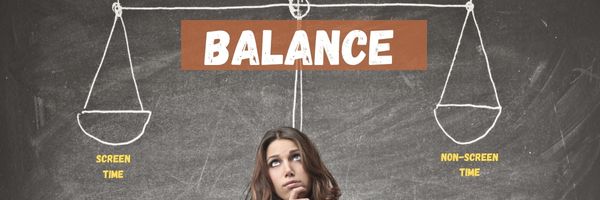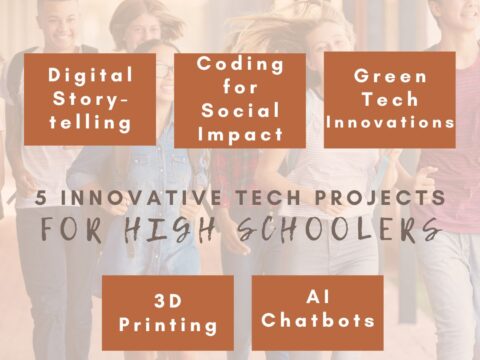Four to six hours in front of a computer for instruction. Unaccounted time for social media and gaming usage. Sounds like too much screen time? Some parents are beginning to see the fatigue in their children. School administrators and teachers are feeling the fatigue, as well as their jobs become increasingly dependent on computer and phone usage. So what gives in the post-pandemic world?
Years ago, I took the lead in writing a Bring Your Own Device (BYOD) policy for my school site, which was later adopted by my district. At the time, I thought this was a novel approach to address the lack of technology for students. It worked until our site eventually became one of the first sites to roll out a one-to-one policy with Chromebooks. While already aware of the effects smartphones had on students’ attention, I tried to keep a balanced approach to using technology in my classroom. However, being a techie, I continually experimented with new applications and, later, the Canvas LMS. I found that students were happy using the technology, but some would rather complete work pen to paper or do an assessment/project without the technology.
Seven years ago, I proposed a day without technology to the site administration. The plan was to have students go an entire day without using their computers. The plan was rooted in providing students with a break in screen time. Since we had a modified day once a week with shortened class times, I figured that as a site, we could utilize modified schedule to implement a day without screen time. However, the site plan was not adopted. So, I took it upon myself to implement it in my classroom with some success selecting certain days during the instructional week to limit screen access. I was upfront with the students about the rationale behind my thought process, explaining to them the need to disconnect, even if for a short time.
Fast forward to the post-pandemic environment of education. After a year of blended instruction, or a combination of face-to-face learning and online learning, schools are questioning the amount of time students spend in front of screens. As schools are out for the summer, teachers and students need relief from the constant dependency on technology, whether it be for work, social media, or entertainment. However, when the school resumes in August and September, will it be back to more screen time? Even during the past school year, many educators who previously used the blended learning approach decided to reduce the amount of virtual learning.
Here is what I propose: At the beginning of the year, before classes start, each site examines its use of technology. This can be done relatively quickly with the help of a form to gather data. The purpose behind this is to identify an area where students can be given screen break time. Departments may also use this approach at the secondary level and at grade levels for the elementary level. The intent is to examine practice and provide students an opportunity to move away from screens, even if for a 20 – 30 minute period. I realize that certain content classes are not dependent on technology which in itself is good. However, because of the growth of online learning platforms, even the basic content has moved to a virtual environment. With these screen breaks, there has to be an alternative platform for students. Online discussions can move to face to face. For those teachers who used Socratic Seminars, this is a great opportunity. Veteran teachers can examine practices from years past and modify them so that students are not in front of the screen. As a history teacher, I would have my students examine an image on paper and engage in historical literacy practice to build their interpretative skills. In each content area, there are many opportunities to facilitate learning without technology and, more importantly, build on social interaction skills.
Going into the fall, many teachers plan to continue with the blended learning approach, which in itself demonstrates pedagogical changes that have taken place over the past five years. It also provides educators the opportunity to capitalize on instructional time and focus on more project-based work in the classroom. Here we have to acknowledge the role of technology in the educational process. However efficient the technology may be in assisting the learning process, it is not to be used as the end all. Learning goes beyond screens; it takes place with the development of critical thinking and problem solving as well as with the interpersonal skills of each student. No matter how schools approach the use of technology, there should be an emphasis on maintaining a balance with technology and the development of student soft skills.
–image credit Deposit Photos
Bio
Christian Miraglia is a recently retired 36-year educator and now Educational Technology Consultant at t4edtech where he also blogs at Edtech and Things Related. He can be found on Twitter @T4edtech, Linkedin, and on his YouTube Channel Transformative Edtech.






































I found the discussion in this post quite interesting. It is difficult to get the balance right. Students do need to be efficient and discerning users of technology. If we think they should be living with less screen time, then we need to model that in the classroom, so I think days without screen time could be good. However, I think the importance of education is not necessarily whether to screen or not screen, but what you have referred to in your final paragraph – the ability to think critically and solve problems.
Agreed. One of the good things that could come if the nation begins to suffer the rolling blackouts some are predicting (as they are in California) is that kids would have to turn to real books and outdoor activities. Not a bad consequence.
It could certainly have some benefits. Even if it’s only a history lesson. 😂
I agree with you wholeheartedly Norah. Students need models for behavior in all areas especially screen time. It is difficult outside the classroom, so the best we an do is be good examples in the classroom. I always tried to limit any phone use while teaching unless it was a family emergency call. I also was intentional in how I explained screen time to students being that they were teens.